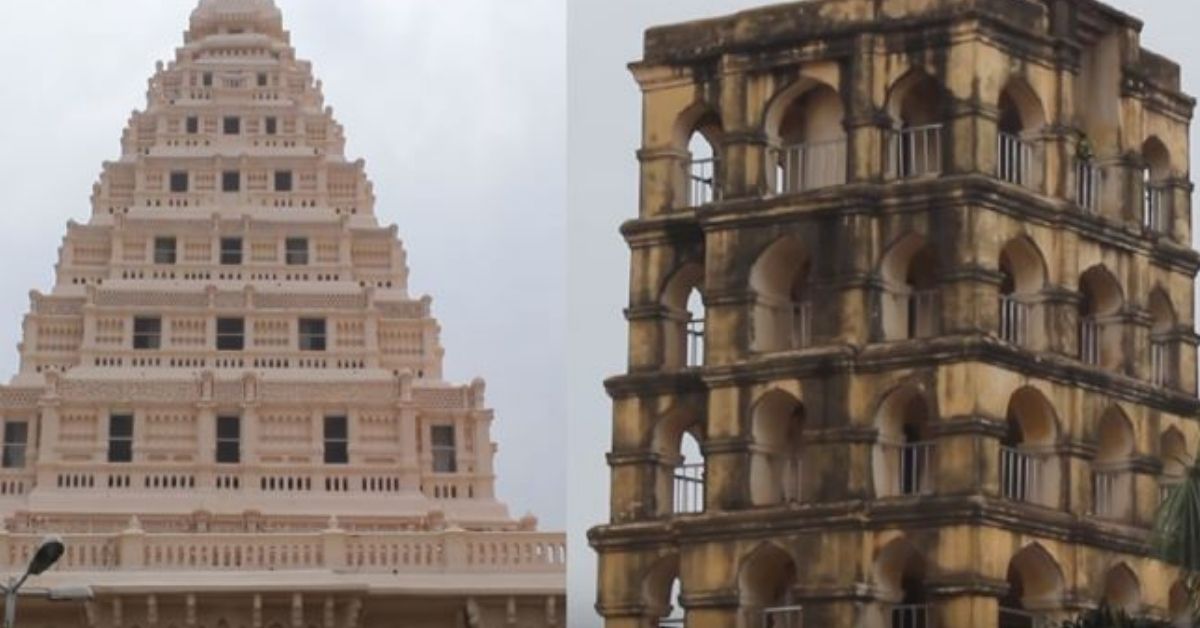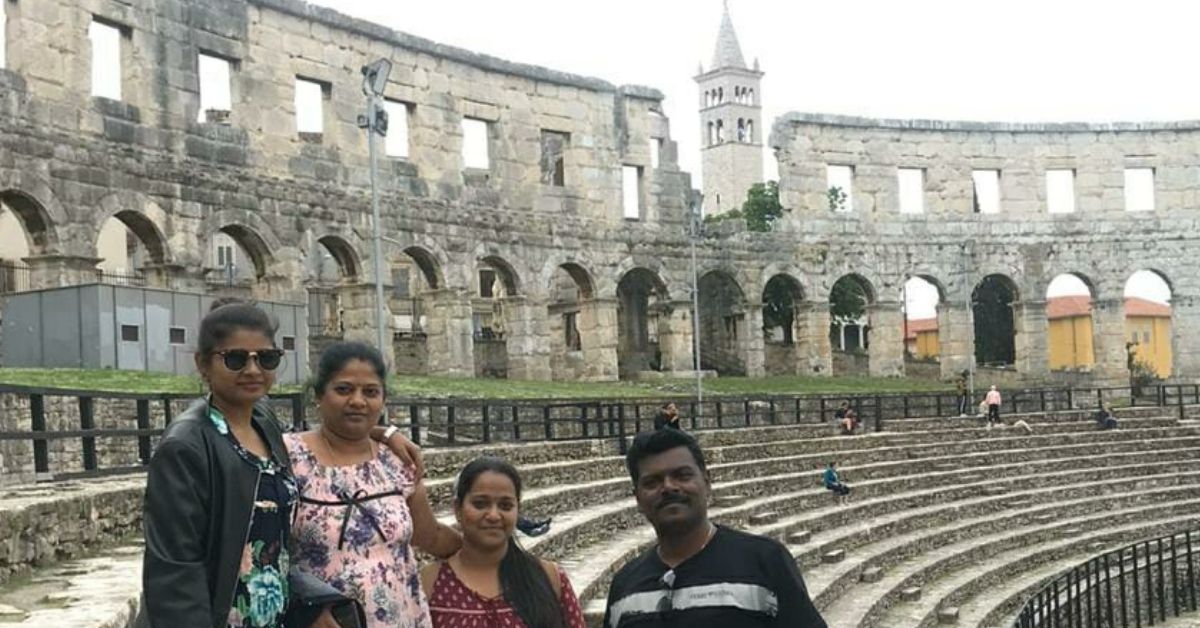Charminar to Thanjavur Palace: Civil Engineer Brings Back Ancient Science to Preserve Heritage
A civil engineer and a professor at Vellore Institute of Technology, Thirumallini Selvaraj has been using ancient and sustainable methods to restore heritage structures such as Padmanabhapuram Palace, Charminar, Vadakkunnathan Temple, and many more.

Among the many things fast disappearing amid rapid urbanisation in India is the ancient belief of harmonious coexistence with nature. Centuries before words like “sustainable” and “eco-friendly” became part of our vocabulary, Indian architects were miles ahead in terms of using environment-friendly techniques and designs with whatever material was available locally.
Professor Thirumallini Selvaraj (47), a civil engineer and teacher at the Vellore Institute of Technology, says this practice has now slowly faded.
“In ancient times, architects used whatever material was locally available. Stone or lime mortar were the most used materials in ancient construction. Others included granite. Plant extracts were also used, including jaggery and kadukkai, which are a type of seed rich in carbohydrates. These projects involved a lot of fermentation. But very few records of these methods exist now,” she notes.
For over a decade, Professor Selvaraj has been working as a consultant to restore heritage sites and structures using ancient techniques. These buildings include the Charminar, Padmanabhapuram Palace, and the Vadakkunnathan Temple. She holds a BE degree in Civil Engineering and has done her PhD in Heritage Lime Mortar Characterisation and Simulation.
In a conversation with The Better India, Professor Selvaraj talks about her work in restoring heritage structures, the importance of doing so using sustainable and ancient techniques and why restoration needs to be looked at from a scientific perspective.

Versatility of structures in India
“While doing my PhD, I began research into restoration of heritage structures in India. Here, we have huge structures that are all very versatile — you have Hindu temples, mosques, old churches, Mughal architecture, British architecture and so much more. There’s a lot to understand about heritage buildings. When you want to repair or restore a particular building, you need inputs from a civil engineer, who can tell you about what material and technology has been used to build the structure,” she says.
“You cannot jump into repairing a building without the understanding of the techniques employed by the original builders. We don’t have enough resources or knowledge to study and understand these structures. So I wanted to do something to cover this gap and look at restoration from the lens of science,” she adds.
“I started with scientific restoration, wherein I studied existing ancient structures to gain a better understanding of how to restore them. India is one of the few places in the world that has used plant extracts in the construction of these structures, based on regional availability. So that’s something I wanted to work with as well,” she says.
Professor Selvaraj has studied and written extensively on the restoration of heritage sites and the challenges posed in a country like India. “I studied projects across the world and collaborated with people working on these in parts of Europe, including Italy. But our structures are different, and we need to employ specific methodologies that involve these plant extracts, which is something these countries don’t use. I standardised the procedure with respect to Indian structures so there was a better understanding of how to approach these projects.”

She worked with conservation engineers and state Archeology Departments to undertake projects across Tamil Nadu and Telangana. “I worked as a consultant on these projects, for which my institute was supportive. They helped me establish the Heritage Research Lab, which is an exclusive laboratory which tries to analyse the material used in heritage structures across India,” she explains. “We started collecting material from these sites to establish some standard aspects, such as the different types of lime available, how to source this, what type of stones are used in particular regions, and things like that. We were able to bring out a lot of research output and I was able to publish over 30 articles on these topics.”
Any time Professor Selvaraj is approached for a restoration project, she collects these samples and does extensive research to scientifically understand how to work on the process. Apart from this, she has also conducted studies on excavation sites and the ancient material found there, to understand how people of ancient civilisations were using different materials and how good they were. “The idea is to understand the level of technology,” she notes. “I’d then submit my reports to the Central or State Governments, as required.”
‘Learning from ancient architecture’
Professor Selvaraj says other countries are far ahead in terms of scientific restoration because they have extensive facilities at their disposal. So she collaborates with them as well — she has worked with the University of Pisa and the National Research Council (Consiglio Nazionale delle Ricerche) in Italy, which has a separate body of research on heritage. She has also worked with Newcastle University in the UK. “The idea is to get maximum knowledge and inputs to ensure absolute scientific restoration.”

Professor Selvaraj has also worked on the Naganathaswamy Temple in Kumbakonam, and the Thanjavur Maratha Palace. She is also studying how we can employ these ancient methods in modern architecture.
Speaking about the challenges that scientific restoration faces in India, she says, “We have modern methods now, including using material such as cement. But cement is highly incompatible with old structures, and if you use it, the entire structure will fail. These mistakes have been made before. People think cement is a strong material, but the results are the opposite. The structure becomes very weak and cracks develop. Also, these materials are highly polluting. But in ancient times, people used eco-friendly materials. Lime is an extremely green material and stone is a naturally occurring rock. As you know, these structures then survive for 1,000-2,000 years. New buildings can’t do that — they’ll stand for 70-80 years, but no longer than that. So that’s what we work with. There’s a lot to learn from ancient architecture.”
“There’s increased discourse on climate change now. In such times, the inputs and knowledge we can gain from ancient techniques become that much more substantial. Ancient structures are a window into the past. It’s the need of the hour for future generations to know the methods deployed to construct civilisations, and how sustainable these have been. All of these will disappear one day and they’re already doing so at a much faster rate here in India than in other places. This is because we’re unable to protect our heritage.”
She adds, “When you visit a foreign country, say Italy, your first thought is that you want to visit Roman settlements. There, they try to link the economy with culture and heritage. This is something we can work on here as well.”
For more insight into Professor Selvaraj’s work and research, you can visit her ResearchGate page.
Edited by Yoshita Rao

Similar Story

‘All For My Dad’s Memory’: This Hero Has Grown 12 Food Forests In The Heart of Mumbai
A tree lover since the age of 9, George Remedios quit his advertising job and founded ‘The Turning Tide’ to increase the forest cover in Mumbai. So far, he has planted 12 food forests with edible fruits and encourages people to grow their own food, even in limited spaces.
Read more >
If you found our stories insightful, informative, or even just enjoyable, we invite you to consider making a voluntary payment to support the work we do at The Better India. Your contribution helps us continue producing quality content that educates, inspires, and drives positive change.
Choose one of the payment options below for your contribution-
By paying for the stories you value, you directly contribute to sustaining our efforts focused on making a difference in the world. Together, let's ensure that impactful stories continue to be told and shared, enriching lives and communities alike.
Thank you for your support. Here are some frequently asked questions you might find helpful to know why you are contributing?


This story made me
-
97
-
121
-
89
-
167












